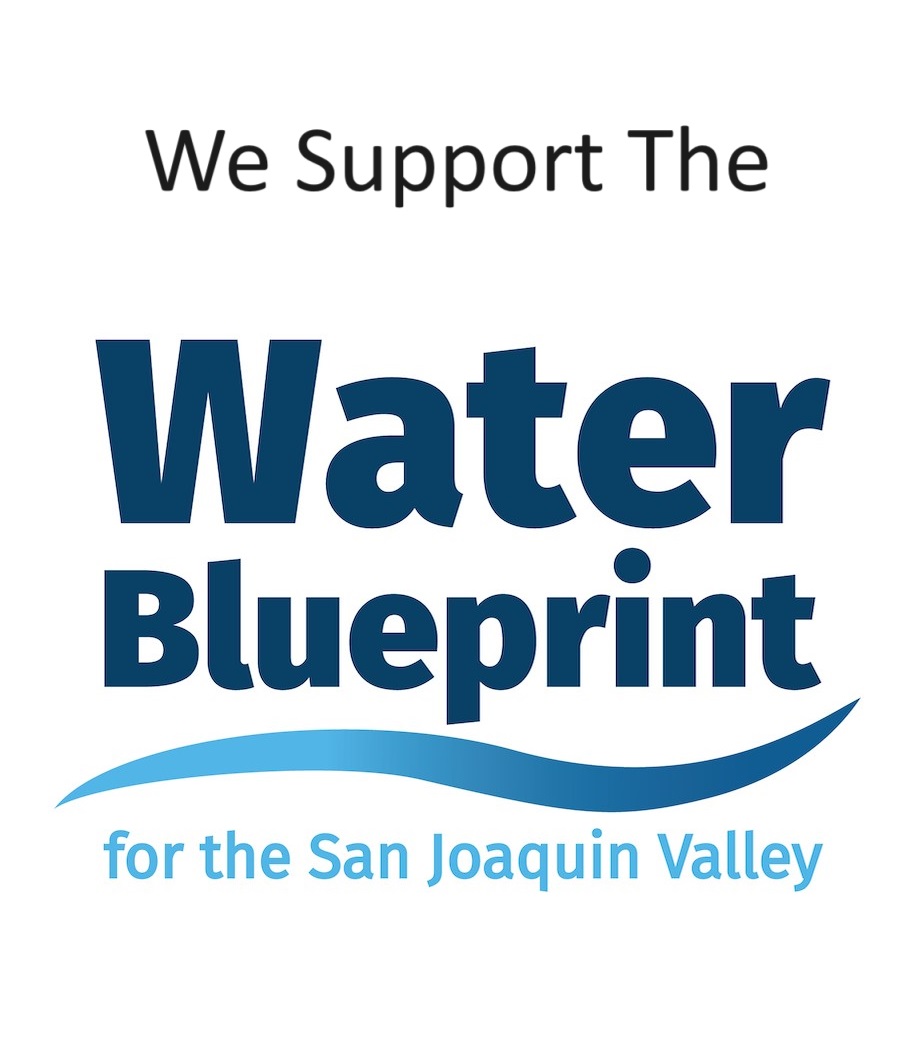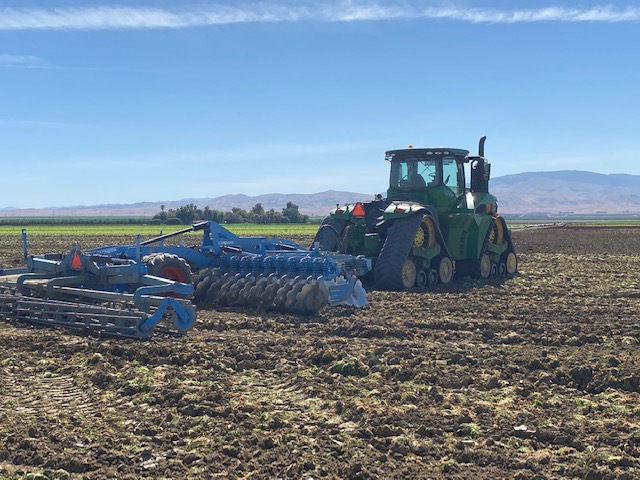By Don A. Wright
The Exchange Contractors board of directors met on Wednesday, July 3, 2024 at its Los Banos headquarters and by telephone. As I write this tomorrow will be the Fourth of July, but this report most likely won’t go out until Monday the 8th. Before we get started: Long ago I learned the folks who can, do. They do leave work early on or skip Fridays altogether. We get a lot of Mondays off as holidays. Which provides an even greater incentive to skinny out on Fridays and make it a four-day weekend.
Who does that? You may ask. Those who can, do. The business owner who has worked around the clock for years to get their enterprise up and running. The management person who set aside down time with family and friends to build their careers. The worker who has faithfully participated in turning a profit and risen through the ranks. It’s part of the perks of being in the American Dream.
I worked part-time at Fresno County with a young Chinese lady when I was in college. She’d escaped from the communists to come to America and try her hand at entrepreneurialism. She was harsh about the American work ethic. I remember her telling me, “In China nobody has this amount of free time.” And she said it kind of snooty like.
I would have to agree with her, although I’ve never been to China I imagine most of them don’t have the privilege to take a day off. There isn’t much down time in the third world subsistence silo. I didn’t realize that then and therefore didn’t have much of a comeback. She was looking at apples and talking about oranges.
But now, given the opportunity I’d tell her she’s only experienced academia and the government view of work. And that’s a very different view from the commercial/private side of work in America. This is not to say those in academia and government don’t work hard. Some work very hard and don’t often get much credit. If you’ve ever sat through a State Water Resources Control Board hearing – it may not be breaking rocks in the hot sun but neither is it a soft relaxed, giggly place with built in nap time. My belabored point is: it’s the private sector that generates wealth. The public sector does not. In our system without the private sector, government wouldn’t have any money to do anything. That’s what is so dangerous in Sacramento and Washington DC – when the government believes it exists to expand its power. At least in Washington there is still a two party back and forth to prevent the tail from wagging the dog so hard it dies.
My belabored point is: it’s the private sector that generates wealth. The public sector does not. In our system without the private sector, government wouldn’t have any money to do anything. That’s what is so dangerous in Sacramento and Washington DC – when the government believes it exists to expand its power. At least in Washington there is still a two party back and forth to prevent the tail from wagging the dog so hard it dies.
Farmers, fishermen, loggers – those entrepreneurs who extract renewables from the earth are the basis for wealth. I’ve never come across any industry that didn’t owe its foundation to the planet. If you have please let me know. I understand even Microsoft was originally financed from timber profits. Happy Fourth of July, let us all be grateful we can have a day off.
The Meeting
The meeting began at 9:00am exactly with Chairman Chris Cardella having Firebaugh Canal Water District General Manager Jeff Bryant lead the gathered in the flag salute. Amen brother. Executive Director Chris White reported the agenda was good and there needs to be a new Ex Con treasurer as Cannon Michael has replaced Jim Nichols as the San Luis Canal Company representative. Wow, that’s going to take some getting used to. Mr. Nichols has been in that seat for as long as I can remember. Michael is a excellent choice. He’s also the Chair of the San Luis Delta Mendota Water Authority. And, like Nichols he’s a descendant of the Miller & Lux families. Although I confess I don’t know the lineage exactly. I guess the minutes were approved and I didn’t hear any public comment.
Financials
The wise and lovely Joanne White gave the financial reports and the board approved.
Water Report
Watermaster Adam Hoffman reported the South of Delta allocations were recently increased from 40 to 50 percent of the contracted amount by the US Bureau of Reclamation. That’s better than a poke in the eye with a sharp stick but in a 100 percent water year one could reasonably expect more than half of the water contracted for.
Reclamation. That’s better than a poke in the eye with a sharp stick but in a 100 percent water year one could reasonably expect more than half of the water contracted for.
Hoffman said the San Luis Reservoir share of federal water is better than anticipated due to better pumping. Both Shasta and Folsom are making releases for the Delta requirements and pumping. He said storage is good but for the state side of SLR. The state intends to increase pumping. Millerton spilled a little in mid-June and is now drawing down about 3,000 acre feet per day. The snow melt is pretty much finished in the Mid Sierra.
The federal Jones plant was pumping all five units for most of June. There was an electrical explosion at the intertie last week that caused the Jones plant to drop to four units. When at full pumping water has to move through the intertie to the state’s California Aqueduct as the Delta Mendota Canal doesn’t have the capacity for all five pumps. Hoffman said the rest of his report is informational. There is going to be a couple of hot weeks this month.
Executive Director’s Report
White said there needs to be a better method to set allocations earlier in the year. He said it’s not the operators fault, but there are too many uninformed moving parts. He said the San Joaquin River Restoration project is still working with the Bureau.
White and others went to Washington DC and made good contacts and were provided an opportunity to educate and inform the elected officials and their staff on projects taking place in the Valley. Senator Alex Padilla’s chief of staff came out and toured the Valley’s water situation. White said he believes that was a very good move for all involved.
opportunity to educate and inform the elected officials and their staff on projects taking place in the Valley. Senator Alex Padilla’s chief of staff came out and toured the Valley’s water situation. White said he believes that was a very good move for all involved.
There are documents hitting the floor this month dealing with the biological opinions in the Delta. He said everyone is coordinating and scrambling to get the comments on the drafts turned in by deadline. The Los Banos Creek project is ongoing and there looks like a good chance to get some more Bureau help in securing funds. Ex Con’s transfer agreements are moving.
Policy & Programs
Steve Chedester had some great stuff to say, just couldn’t hear him over the sound of rustling papers. So, I’m guessing a little here. He said design progress has slowed on some of the San Joaquin River Restoration projects. Modeling is going slow. There hasn’t been anything new with Sac Dam.
Chedester said there is indeed a great deal of effort to look at the Delta biops and get comments in. The Water Blueprint for the San Joaquin Valley is wrangling resources to continue a more robust funding for additional Hallmark Group services. A draft strategic plan was presented and is being reviewed.
Water Resources Plan
Ex Con is involved in proactive water supply improvement projects. The before mentioned Los Banos Creek project, the Del Puerto Dam project and other recharge programs. Chedester spoke about funding for the Los Banos Creek is needed and it looks like it will be available.
White added the Del Puerto Canyon road realignment is being narrowed down and one positive comment from a landowner was received. He said there are about half a dozen homes back there up the canyon. The County of Merced has asked for a update at one of its September meetings.
Transfers
Ex Con has a history of water transfers and while this is routine there is some serious criterion that must be met. White explained how the review and the necessary boxes were checked. The board agreed to transfer 600 a/f to Westlands. The Transfer Committee meeting minutes were also approved.
Community Infrastructure
White said it will require board action to form the Community Infrastructure Program committee and accounting and procedures. The local governments have been informed and that it’s about ready to roll out and applications for awards will be decided. The website is ready to launch after board approves. I asked how is this not a gift of public funds.
Attorney Andrew McClure explained Ex Con is a Joint Powers Authority formed under state law. This allows for donations to charitable causes that further the JPA’s mission. All of the money being awarded will be applied to local water related projects enacted by the agencies receiving the funds. That’s why it’s not a gift of public funds. Good for them.
All of the public outreach and awards structure are in place to implement a transfer of two percent net profit to the infrastructure awards. The board voted to approve with Cardella and Central California Irrigation District Director Eric Fontana as the members of the ad hoc committee.
Gov’t Mischief
Consultant Dave Cory said the State Board’s ready to seat an expert panel on issues relating to nitrate in groundwater. Various Ag Coalitions sent the Board a letter stating it is way too early to seat an expert panel but they don’t expect that to have any influence with the State Board. This letter included comments on the importance of having not just theoretical knowledge of agriculture but also some folks with real world experience sitting on the expert panel.
Cory said by the end of the month there should be a chart of acceptable nitrogen use for various crops grown in various Valley locations. If the State Board imposes a one-size fits all regulatory regime it will be a disaster.
SGMA
White asked to go back to his Ex Direct report and asked Central California Irrigation District GM Jarrett Martin to speak on SGMA. Martin said the Groundwater Sustainability Plan probationary review of the San Luis Delta Mendota Subbasin is of top concern. He said the SLDM Subbasin’s hearing is most likely not going to happen until next May. The objective is for the subbasin to stay out of probation by getting a positive GSP approval from the State Board. All public comments are in and the rewrite should be ready by the end of summer. This will provide enough time to further refine and get things ready.
Martin said they’ve received good feedback from the State Board staff. Well mitigation funding has largely been funded by the state and the State Board (and many others) are worried the budget deficits in Sacramento will shift the funding onus onto the GSAs. White said the next GSA meeting is going to be very important as the renewed GSP is up for adoption. At that point all the municipalities involved need to also get this approved in August.
John Wiersma, GM SLCC has been very involved in this effort. He said no matter what happens he is very proud of the work product and the work of the coordination committee and staff to get this heavy lift accomplished by the deadline.
Martin said the state’s priority for well mitigation is to get potable water to any domestic location within 24-48 hours. If the well runs dry a water tank will be needed. He said practically speaking city wells can do some quality testing so most of the impact will be rural domestic wells. Martin said talks with Self Help Enterprises will most likely be in the works soon. It would make more sense and save expenses to contract with them than for the GSA to try and fill that role.
Legislation & Communications
White said most of the state and federal developments are in the packet. He said both education and resources are looking at bonds now. Water, both surface and groundwater project funds are included in the water bond, but not much for surface water. Which is disappointing to anyone whose life depends on water.
White said Lighthouse Public Affairs has been busy earning its keep with social media and other outreach efforts.
Workplace Violence
ACWA advised all the water agencies have a workshop and policy in place to deal with workplace violence. The major message is to deescalate and don’t be a hero. That’s asking a lot but it covers internal and external threats, like if a crazed reporter broke into HQ while making threats with a pen.
Attorney’s Report
McClure told the board a new, single GSP will be going to the judge to show the NGO’s suit is no longer valid as the GSP they sued over doesn’t exist. You’d think that’d trigger a dismissal.
He said an undesirable result under SGMA is chronic lowering of groundwater and that has been tinkered with by the State Board to include almost anything. Well mitigation measures in the GSP were determined as inadequate by the State Board as a funding plan wasn’t included. Does this mean a GSA has to go forth with another 218 election before the GSP can be accepted?
Next McClure said the Chevron deference ruling at SCOTUS has impacts. Sounds like positive impacts. Under the original Chevron ruling the courts were peachy with letting the political appointees fill in the blanks on law when there was wiggle room and not allow plaintiffs to appeal these decisions to the court for relief. As McClure correctly pointed out the mainstream press has declared the sky is falling and environmental protections have been gutted. This is of course not true like much of what the MSM pumps out.
Under the new deal with Chevron the courts no longer have to allow an agency to interpret law. There will be many technical issues a judge won’t rule on without hearing from the agencies but the legality of the interpretation is now back in the hands of the court – as the constitution intended. This is a federal deal. McClure said the new Chevron ruling shouldn’t have much of an impact if any on the Delta biops or SJR Restoration. He said possibly the Central Valley Project Improvement Act might have some impact – but this Chevron ruling isn’t retroactive.
Four Entities & Informational
Bryant said supply demands are tracking normal this year. There is a great deal of hyacinth in the Mendota Pool. FCWD is going more and more solar.
Wiersma said like Firebaugh, supply trends are normal. Much of the time is spent battling aquatic weeds.
Martin said hyacinth is time consuming.
Cardella spoke for Mike Gardner, GM Columbia Canal Company saying they had a lady come out to one of the canal banks infested with rodents (the bank, not the lady) and she brought ferrets. Things are better now. Hyacinth is also taking a big chunk of time and effort.
Under info White reminded everyone again the August board meeting will include the very important SGMA agenda items of the new GSP. In August the California Ag Leadership Program will be touring the area. What a lovely time of year to walk the fields in the San Joaquin Valley. Especially on the westside. The cool, fragrant breeze blowing gently through your air – it’s as refreshing as a glass of ice water.
Closed Session
The meeting went into closed session at 10:30am to look at seven items of various Ralph M. Brown Act acceptability regarding litigation, personnel and real property negotiations. And that was that. Happy fourth, be good to each other and yourselves.
DISCLAIMER OF RESPONSIBILITY; Waterwrights.net strives to provide its clients with the most complete, up-to-date, and accurate information available. Nevertheless, Waterwrights.net does not serve as a guarantor of the accuracy or completeness of the information provided, and specifically disclaims any and all responsibility for information that is not accurate, up-to-date, or complete. Waterwrights.net’s clients therefore rely on the accuracy, completeness and timeliness of information from DAW entirely at their own risk. The opinions expressed in this report are those of the author and do not represent any advertisers or third parties.
ALL RIGHTS RESERVED. Copyright 2024 by WaterWrights.net/DAW
SAN JOAQUIN RIVER EXCHANGE CONTRACTORS WATER AUTHORITY
Main Office: 541 H Street, P.O. Box 2115 Los Banos, CA 93653 Office 209/827-8616 www.sjrecwa.net Email: contactus@sjrecwa.net
DWR SGMA Identifier #5-022.07
The Exchange Contractors cover almost a quarter of a million acres in Fresno, Madera, Merced and Stanislaus Counties.
Mission Statement
The Exchange Contractors Water Authority mission is to effectively protect the Exchange Contract and maximize local water supply, flexibility and redundancy in order to maintain local control over the members’ water supply.
Board
Chris Cardella -Chair Columbia Canal Company, Mike Stearns-Vice Chair Director Firebaugh Canal Water District, James L. Nickel-Treasurer San Luis Canal Company, Eric Fontana- Director Central California Irrigation District
Staff
Chris White-Executive Director, Steve Chedester- Director Policies & Programs, Adam Hoffman-Water Resources Specialist, Joann White-Director Finance and Human Resources, Darlene O’Brien- Administrative Assistant, Andy McClure-Attorney Minasian Law Firm.
History
From the Exchange Contractors’ website: www.sjrecwa.net The San Joaquin River Exchange Contractors hold some of the oldest water rights in the state, dating back to the late 1800s. The rights were established by Henry Miller of the legendary Miller and Lux cattle empire. In 1871, Henry Miller constructed canals to divert water from the San Joaquin and North Fork of the Kings Rivers for irrigation of his vast acreage. Today, several of the original Miller and Lux canals are operated by the Exchange Contractors.
Although Henry Miller’s canals served the irrigation needs of his estate in the western portion of Fresno, Madera, Merced, and Stanislaus counties, in order for more growth on the east side of the San Joaquin Valley to occur, more water was needed. In 1933, the United States Department of Interior undertook the Central Valley Project, a vast undertaking to build dams throughout the great Central Valley including the Sacramento, American and San Joaquin Rivers. When construction of the Friant Dam (north of Fresno) was under consideration, feasibility studies showed that irrigation development of the Friant Project between Chowchilla and Bakersfield depended upon water being diverted from the San Joaquin River at Friant Dam and brought to the east side of the valley, via the Friant-Kern Canal.
To accomplish this, the government asked the heirs of Miller and Lux to agree to “exchange” where they receive their pre-1914 appropriative and riparian water from the San Joaquin and Kings Rivers for guaranteed deliveries of “substitute” water from the Sacramento River by means of the Delta-Mendota Canal and other facilities of the United States. This agreement, known as the “Exchange Contract,” along with the accompanying “Purchase Contract,” were reached in 1939 and that led to the name “San Joaquin River Exchange Contractors.” In normal years, the Exchange Contractors are guaranteed 100% of their contractual water allotment (840,000 acre feet) and in critical years the amount is 75% (650,000 a/f).
The Exchange Contractors, however, did not abandon their San Joaquin River water rights. Instead, they agreed not to exercise those San Joaquin and Kings Rivers’ water rights if guaranteed water deliveries continued through the Delta-Mendota Canal or other facilities of the United States.





































